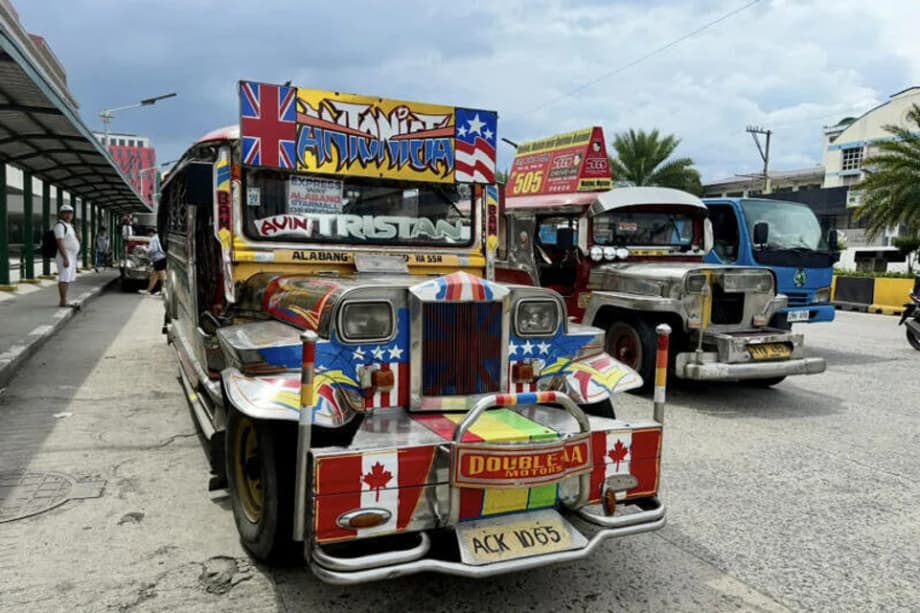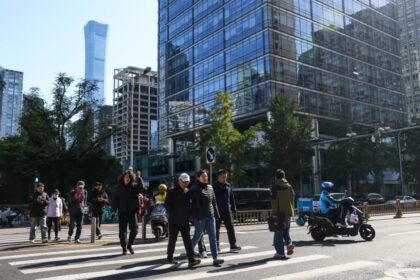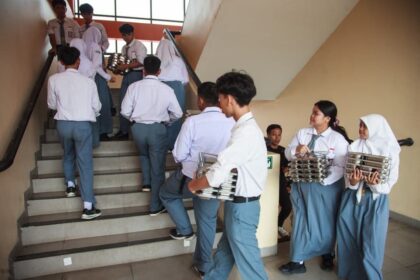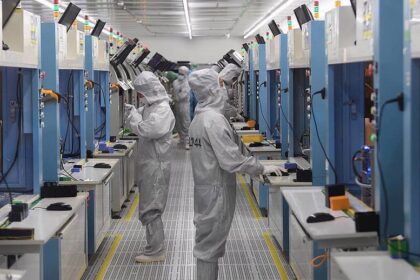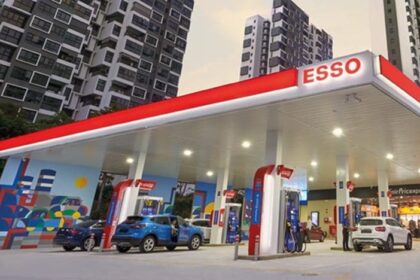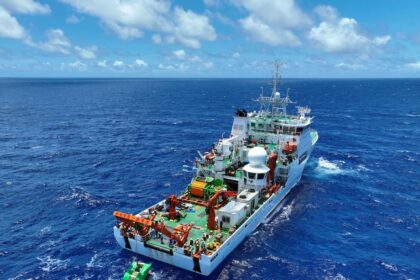From war ruins to a daily lifeline
Eighty years after World War II, the jeepney still rumbles through Philippine cities and towns as a rolling emblem of resilience. In the late 1940s, with Manila in ruins and public transit shattered, inventive mechanics repurposed surplus military jeeps into brightly painted passenger carriers. Two long benches, a protective roof, and a rear entrance turned a battlefield utility vehicle into the country’s most recognizable ride. The jeepney quickly became a fixture of daily life, moving workers, students, and families through narrow streets that buses and trains could not reach.
- From war ruins to a daily lifeline
- Why modernization is on the table
- Culture, cost, and the heart of the conflict
- Electric jeepneys and the clean air promise
- Rules, deadlines, and the push to consolidate
- Local makers, national pride, and the import dilemma
- On the road: Cities testing e jeepneys
- What will riders notice in the next generation
- Cleaner air, quieter streets, and the energy equation
- Fares, equity, and access
- Keeping heritage alive while changing form
- Possible paths over the next decade
- The Bottom Line
Beyond utility, the jeepney became a canvas. Owners adorned their vehicles with saints, superheroes, family tributes, and hometown pride. The bodywork told stories of faith and migration, love and hustle. For commuters, the jeepney has long been the most affordable journey across crowded cities. For drivers and small operators, it often represents a livelihood passed down across generations.
Yet eight decades on, the future of this Filipino icon is uncertain. A transformation is underway, driven by public health concerns, climate goals, and a desire for safer, more reliable transport. The rides that carried a nation through the post war period now face a new test.
Why modernization is on the table
The Philippine government has pursued a sweeping plan to refresh public transport through the Public Utility Vehicle Modernization Program (PUVMP) launched in 2017. The goal is simple to state yet hard to execute. Replace aging, diesel powered jeepneys and other public utility vehicles with safer, cleaner, more accessible models. Standardize routes and operations so commuters enjoy predictable service. Support operators through cooperatives that can secure loans, maintain fleets, and comply with safety and environmental rules.
Officials cite pollution, safety, and traffic management as the main drivers. Jeepneys are sturdy and easy to fix, but older engines emit soot that worsens urban air quality. Safety features like better brakes, side doors, and higher chassis strength, along with modern fare systems and GPS, can create a more orderly, less chaotic commute. Regulators also want vehicles that meet emissions standards, either through Euro 4 compliant engines or electric drivetrains.
Implementation has proved contentious. Operators were required to consolidate into cooperatives or corporations to keep their routes, a shift many perceived as a threat to independence. The government reported that a large majority of franchise holders consolidated by the end of 2023, yet transport groups dispute those figures and argue that many small operators were boxed out. Protests have periodically halted traffic in Metro Manila and other cities as drivers pressed for a slower, fairer transition.
Finance officials have framed the change in stark terms. One senior policymaker publicly argued that the jeepney must move from roads to museums, calling it inefficient and unhealthy. Transport leaders counter that commuters deserve cleaner air and safer vehicles but say the transition must not ruin livelihoods.
Culture, cost, and the heart of the conflict
At the center of the debate is money. A modern jeepney or mini bus that complies with new standards can cost around 50,000 US dollars, which is three to four times the price of a traditional unit. Even with government subsidies and bank financing, that price is daunting for many family run operators who survive on thin margins. Cooperatives can spread the cost and secure credit, but for drivers who have long managed their own vehicles, the risk of debt is real.
There is also fear of fare hikes. Traditional jeepneys charge low fares that make daily commuting possible for millions. Drivers argue that expensive vehicles, higher maintenance costs, and formal terminal fees could push up fares. Commuters, they say, should not bear the brunt of modernization through higher prices or fewer available rides.
Some drivers speak in very personal terms about the bond with their vehicles. One veteran driver in Manila described his jeepney as a partner that he knows inside and out, a daily companion that has helped feed a large family. He worries that losing his route would force him to return to the province without work. Commuters voice their own anxieties. A medical student put it plainly. It is the only and the most convenient way, and taxis are expensive on a student budget.
Electric jeepneys and the clean air promise
Supporters of the transition say electric public transport is part of the answer. Battery electric jeepneys are already operating on select routes. EVs produce zero tailpipe emissions, which can improve air quality in dense neighborhoods. They are also quieter in traffic and often more efficient in start stop urban driving. When charged from cleaner power sources, they can cut greenhouse gas emissions compared to diesel, especially as the grid moves toward more renewables.
Daily operating costs can also fall. Estimates place the typical diesel fuel outlay for jeepneys at about 1,500 to 1,800 pesos per day, while electricity for an e jeepney can cost roughly 500 to 700 pesos for a similar workload. Savings vary by route, passenger loads, and electricity rates, but the fuel math appeals to operators facing volatile diesel prices.
Transitioning at scale will not be easy. Charging infrastructure needs investment, including overnight depots and on route top up points. Batteries must withstand heat, heavy loads, and frequent stops. Operators need maintenance training, and parts supply chains must be ready. Policymakers will also have to align incentives, from tax breaks to route planning that matches charging realities.
Rules, deadlines, and the push to consolidate
The consolidation of operators into cooperatives is one of the most controversial features of the PUVMP. The intent is to formalize an atomized sector and improve service quality through fleet management, scheduled dispatch, and standardized maintenance. By banding together, small operators can qualify for government loans and subsidies while meeting technical requirements that few could handle alone.
Driver groups warn that consolidation fees, new compliance costs, and expensive units risk collapsing a micro industry that supports hundreds of thousands of workers. Labor organizers have called for a just transition, a term that means protecting workers during change. They want higher subsidies, local manufacturing to lower prices, and service contracting so drivers receive stable incomes for delivering scheduled trips on assigned routes.
Transport unions have repeated a clear line during protests and negotiations.
“No modernisation without a just transition.”
Lawmakers have sometimes stepped in to slow the process. In 2024, the Senate moved to suspend implementation while concerns from drivers and operators were addressed. That pause reflected the difficulty of balancing clean air and safety goals with the needs of low income workers and commuters who rely on the cheapest ride.
Local makers, national pride, and the import dilemma
Modernization is not only an environmental or traffic story. It is also an industrial one. The jeepney industry was once anchored by local makers like Sarao Motors and Francisco Motors, which supplied vehicles customized to Filipino roads and tastes. Production dwindled as cheaper imports and new transport lines eroded demand, and as proposed standards outpaced the capital capacity of small shops.
Manufacturers and academics have convened to sketch a path that retains local jobs. Their proposals include locally assembled modern units, cleaner engines or electric drivetrains, and standardized safety features. The goal is to keep more value in the country and tailor vehicles to actual route conditions. Domestic manufacturing, they argue, can shorten parts supply lines, support maintenance training, and preserve the craftsmanship that made the jeepney a cultural icon.
The choice between fully imported units and a stronger local supply base will shape costs and resilience. If the country can produce compliant vehicles at lower prices, more operators may be able to upgrade without crushing debt. If imports dominate, operators could face parts delays, higher maintenance costs, and fewer opportunities for small shops that have kept the fleet running for decades.
On the road: Cities testing e jeepneys
Some cities have moved ahead with modern units to see how they perform in daily service. In Bacolod, new electric jeepneys have been added to an urban route, backed by a cooperative that plans to roll out dozens more units under a regulatory franchise. The city pledged to install more charging stations, and the cooperative arranged a rent to own financing structure with an electric vehicle supplier. The initial fleet is small, but it shows how local government support, cooperative financing, and manufacturer partnerships can bring e jeepneys onto the road.
Experiments like these matter. They test real world costs, charging patterns, and passenger acceptance. They surface maintenance issues early and help planners refine routes. They also reveal how much driver training and back end support is needed to keep electric fleets reliable during heat, rain, and rush hour crowds.
What will riders notice in the next generation
Passengers will likely see changes in three areas. First, comfort. Many new units have more headroom and space, better ventilation or air conditioning, and smoother rides. Second, safety. Side door entry, higher floors, stronger frames, and better brakes reduce risk for riders and pedestrians. Third, reliability. GPS tracking, scheduled dispatch, and automatic fare collection can reduce wait times and reduce cash handling.
Routes and boarding conventions will shift too. Riders may board and alight at designated stops rather than tapping the roof to request a halt. Cooperatives will likely operate fixed schedules, making commutes more predictable on main corridors. The tradeoff could be less flexibility at the margins, especially on small streets where informal stops today are part of the convenience that people defend.
Not everyone sees the modern units as true heirs to the jeepney tradition. One long time manufacturer put it bluntly.
“The new vehicles are definitely not jeepneys, all the lines and details are different,” said Ed Sarao of Sarao Motors, arguing they are really mini buses.
Transport officials counter that riders value comfort and reliability. A senior road transport executive once predicted that once commuters experience the improved system, resistance would fade.
“I am sure when people see the new system on the road, and once people try it, the opposition will be lost,” said Thomas Orbos, a transport undersecretary.
Cleaner air, quieter streets, and the energy equation
The environmental case is straightforward. Diesel exhaust carries pollutants that harm lungs and aggravate asthma. Replacing older engines with Euro 4 compliant versions or electric drivetrains can reduce soot and nitrogen oxides in busy corridors. Electric fleets can also cut noise, a quality of life improvement in neighborhoods crowded with vehicles and tricycles.
The climate case depends on the electricity that charges the vehicles. If more power comes from gas, solar, wind, and geothermal, the emissions advantage grows. Smart route planning can maximize charging during off peak hours and align depot locations with grid capacity. Battery recycling and second life uses for bus packs will be part of the picture as fleets scale up.
For operators, the economics will rest on total cost of ownership. Upfront prices are higher, but lower fuel and fewer moving parts can reduce lifetime costs. The balance shifts with interest rates, subsidies, energy prices, and how many kilometers a unit runs each day. As more cities fine tune charging networks and maintenance routines, costs should become clearer for cooperatives weighing their options.
Fares, equity, and access
Any major change to the cheapest mass transport option raises equity concerns. If fares rise too quickly, low income commuters will be squeezed. Service contracting, where government pays operators to deliver scheduled trips, can stabilize incomes and keep fares affordable during the transition. Transparent route planning and public consultation can help ensure that mobility in underserved neighborhoods improves rather than erodes.
Accessibility is also central. Modern units are being shaped with features such as wider doors and priority seating that can help seniors and passengers with disabilities. Real progress will depend on sidewalks, crossings, and curb design as much as vehicle specs. In dense districts, small street geometry will still demand compact vehicles that turn and stop safely.
Keeping heritage alive while changing form
Even advocates of modern fleets see value in preserving the jeepney’s identity. That identity is not just a chrome grill or a bonnet mascot. It is the role the vehicle plays in daily life, the entrepreneurship of owner drivers, and the folk art that gave color to otherwise gray commutes. Some operators dream of hybrid solutions, with locally built bodies that allow artists to keep telling stories on metal canvases while meeting safety rules underneath.
There is also space for curated preservation. Museums and cultural programs can safeguard the history of the jeepney, from early post war conversions to peak era designs of the 1970s and 1980s. Tourism routes in heritage districts can keep a few traditional units in limited service. The mass transport workhorse may evolve into a different shape and drivetrain, yet the spirit that people celebrate can endure.
Possible paths over the next decade
Several futures are plausible, and they can coexist across regions.
Mixed fleets tuned to local roads
Metro Manila and big cities might adopt larger, air conditioned units on main corridors, with e jeepneys on shorter city loops linked to charging depots. Provincial towns could keep smaller, cleaner engine variants where electricity supply is less reliable.
Local manufacturing and parts ecosystems
A blend of locally assembled bodies and imported drivetrains could strike a balance between cost, compliance, and cultural form. Training programs for EV maintenance and electronics would open new technical jobs while supporting cooperatives.
Service contracting and fare protection
If government expands service contracting, operators could earn steady fees for scheduled trips, which stabilizes cash flow and brings banks to the table. Fares would remain within reach for daily riders while the state pays for public service outcomes.
Upgrades where replacement is not yet viable
In targeted cases, certified upgrades to existing units, such as cleaner engines and safety retrofits, could bridge the gap for routes where full replacement is financially out of reach. Clear standards and periodic inspections would be essential.
Scale up of charging and grid coordination
City governments can map depots, charging bays, and route layovers to match battery ranges. Coordination with power utilities and investment in distribution lines will determine how fast e jeepneys can grow.
The Bottom Line
- Jeepneys emerged after World War II as repurposed military vehicles and became a cultural icon and transport lifeline.
- The PUVMP aims to replace aging diesel fleets with safer, cleaner, and more accessible units through cooperatives.
- High upfront costs for modern units, around 50,000 US dollars, strain drivers and small operators despite subsidies.
- Driver groups support cleaner air and safety but demand a just transition, including higher aid and service contracting.
- Electric jeepneys promise zero tailpipe emissions and lower daily energy costs, but charging networks need investment.
- Local manufacturing and assembly could reduce costs, protect jobs, and keep cultural design elements alive.
- Cities like Bacolod are piloting e jeepneys with local government support and cooperative financing.
- Modernization is likely to produce mixed fleets, with route specific solutions and a gradual shift to electric over time.


